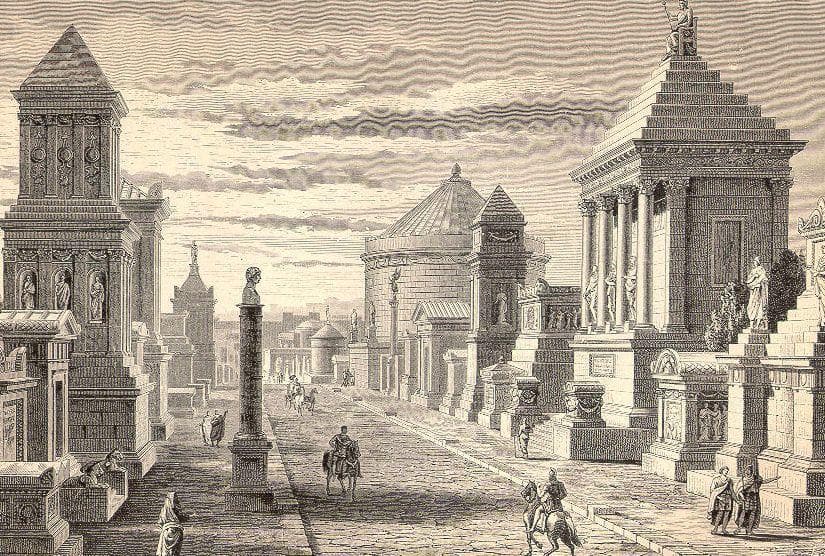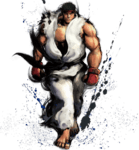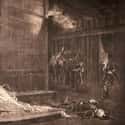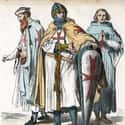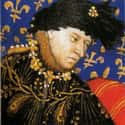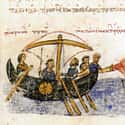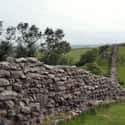-
(#12) Attila the Hun
- Politician
The historical image of Attila the Hun charging across the plains leading a horde of horsemen is a lot closer to Khal Drogo than it is Joffrey Baratheon. Still, Attila and Joffrey share one important life detail aside from their villainous persuasion: they both perished under mysterious circumstances at their own weddings.
Attila’s marriage to Ildico wasn’t his first, but it would be his last. When he was discovered the next morning, he had met his demise, suffocating on his own blood. Theories on his passing range from excess alcohol to burst blood vessels, but there are plenty who believe the great leader was slain. Unlike Joffrey's end, Attila’s passing remains a mystery.
-
(#14) Knights Templar
There’s no direct real-world equivalent to the Night’s Watch in terms of their role as guardians of a magical ice wall, but they do have some cultural brothers-in-arms in the Knights Templar. In fact, the parallels between the two orders are so numerous that the Templars likely served as a direct inspiration.
Like the Night's Watch, the Knights Templar took an oath of chastity and gave up all possessions and titles upon joining. Both orders recruited from all corners of society and promised absolution of sins, and both were led by elected commanders who led for life. Perhaps the most interesting parallel is that, like the Night's Watch in Westeros, the history and lore of the Knights Templar is so wrapped up in myth and legend that it’s difficult to fully separate fact from fiction.
-
(#1) Wars of the Roses
- Military Conflict
The A Song of Ice and Fire novels that inspired Game of Thrones are loosely influenced by an important real-world conflict: the Wars of the Roses. That period of civil unrest spanned three decades in the 15th century, and it's easy to see the connection to George R.R. Martin’s work.
During the conflict, two rival royal families, the Yorks and Lancasters, feuded over the throne of England. The parallel to the conflict between the Starks and Lannisters over the Iron Throne of Westeros is rather obvious, but Martin is an author who does his homework, so the similarities run much deeper than just the names. Mad kings, heirs being spirited away, and alliance-sealing marriages are all plot points in both the Game of Thrones and its real-world counterpart.
Martin has openly discussed how he took inspiration from well-known texts on the historical subject, telling The Guardian:
My model for this was the four-volume history of the Plantagenets that Thomas B. Costain wrote in the '50s. It’s old‑fashioned history: he’s not interested in analyzing socioeconomic trends or cultural shifts so much as... the plots and the betrayals, all the juicy stuff. Costain did a wonderful job on the Plantagenets so I tried to do that for the Targaryens.
-
(#13) Charles VI of France
- Notable Figure
In many ways, the conflict in Game of Thrones stems from the actions of the generation that preceded its main cast, and their troubles were largely caused by the Mad King, Aerys Targaryen. Aerys’s slaying of Rickard and Brandon Stark - and his subsequent demand for the heads of Ned Stark and Robert Baratheon - sparked Robert’s Rebellion, and his actions were the result of his slow descent into madness.
There have been many mad monarchs in history, but the one with the clearest correlation to Aerys seems to be King Charles VI, also known as Charles the Mad. Like Aerys, Charles began to slip into insanity and frequent bouts of aggression as a result of his increasing paranoia. Unlike the fictional Targaryen, the French king’s paranoia stemmed from a condition that caused him to think his entire body was made of glass.
-
(#9) The Battle Of Blackwater Bay Follows The Plot Of The Second Arab Siege Of Constantinople
The conflict at Blackwater Bay closes the second season of Game of Thrones and remains one of the most epic moments in the series. Some viewers might have felt the fiery action stretched the bounds of the show’s semi-medieval setting, but things actually went down a lot like the Second Arab Siege of Constantinople.
Both conflicts featured a naval strike against a city that sat on a bay, with Constantinople protected by the Golden Horn. The Turks didn’t have access to the fictional wildfire, but they did have Greek fire, an incendiary substance that was thrown at enemy ships with great success. The bay at Constantinople was also protected by a great chain, which is the same defense Tyrion Lannister uses to turn the tide against Stannis Baratheon's fleet.
-
(#4) The Wall Has An Ancient Roman Counterpart In Hadrian’s Wall
The most obvious historical parallel in A Song of Ice and Fire is also the one that inspired the entire series. While the Romans didn’t have the technology to erect a towering wall of ice like the one along the northern border of Westeros, they did build Hadrian’s Wall across 73 miles of northern Britain.
Hadrian’s Wall was intended to keep out those the Romans saw as barbarians - Picts, in this case, instead of Wildlings. Just as the Wall marks the northernmost reach of Westerosi authority, Hadrian’s Wall was also seen as a marker of the Roman Empire’s upper limit. There was no analog to the Night’s Watch tasked with manning Hadrian’s Wall, though; it was just staffed by the Roman legions.
As George R.R. Martin tells it, his first inklings of the story that would become A Song of Ice and Fire began with a visit to Hadrian’s Wall:
The Wall predates anything else. I can trace back the inspiration for that to 1981. I was in England visiting a friend, and as we approached the border of England and Scotland, we stopped to see Hadrian’s Wall. I stood up there and I tried to imagine what it was like to be a Roman legionary, standing on this wall, looking at these distant hills. It was a very profound feeling. For the Romans at that time, this was the end of civilization; it was the end of the world. We know that there were Scots beyond the hills, but they didn’t know that. It could have been any kind of monster. It was the sense of this barrier against dark forces - it planted something in me. But when you write fantasy, everything is bigger and more colorful, so I took the Wall and made it three times as long and 700 feet high, and made it out of ice.
New Random Displays Display All By Ranking
About This Tool
When George RR Martin created a highly detailed fantasy medieval world, most of the content of "Game of Thrones" based on medieval European history. It is certain that Martin drew a lot of historical details from the "War of the Roses", which between the Lancaster family and the York family for the throne of England from 1455 to 1485 AD. They are the two descendants of the King Edward III of the Gorse dynasty.
There are many plots in "Game Of Thrones" that have real historical parallels in medieval times. The random tool lists 15 details about the historical events that are similar to "Game Of Thrones".
Our data comes from Ranker, If you want to participate in the ranking of items displayed on this page, please click here.

